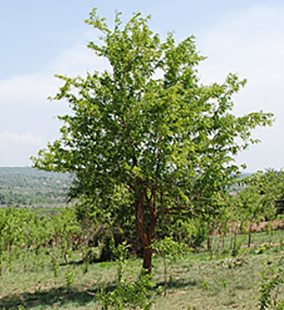 Two readers have kindly offered their experience of dealing with government authorities now regulating the movement and commercial activity surrounding African blackwood.
Two readers have kindly offered their experience of dealing with government authorities now regulating the movement and commercial activity surrounding African blackwood.
Piper Bob Low: ‘Having an upcoming trip in January to France via Switzerland with bagpipes, I contacted APHA [the regulating body in the UK] for advice. They confirmed they cannot issue an ‘instrument passport’ until dalbergia is formally adopted into the EU version of CITES. They anticipated earliest would be mid-February for that to happen.
‘

‘They believed that I would be okay for travel outside the EU (ie Switzerland) under the general CITES exemption for personal items less than 10kg, but advised checking with Switzerland. I duly contacted the Swiss agency via email (address: cites@blv.admin.ch) who confirmed I could transit through Switzerland carrying my own blackwood instrument without paperwork.’
That’s good news Bob and thanks for the Swiss contact. All pipers whether travelling within the EU or not are covered by the 10kg rule. But as I said earlier, rules will be different country to country and it is pleasing to see the Swiss authorities dealing with Bob’s application as they should.
A slightly different experience for reader Steve Rooklidge in California. Steve writes: ‘Attached is the response I received after submitting my USFW CITES application for a pre-convention export permit for blackwood pipes. As you can see, the wait is long:
‘Thank you for submitting an application to the U.S. Fish and Wildlife Service. The application was received by the Division of Management Authority on 01/17/2017; check number 2141 accompanied the application. Your application has been assigned the following PRT identification number: **US17870C/9
 ‘While processing time may be less, you should anticipate a minimum of 30 days to process your request, with many requests averaging between 60 to 90 days due to some requests which need to be
‘While processing time may be less, you should anticipate a minimum of 30 days to process your request, with many requests averaging between 60 to 90 days due to some requests which need to be
published in the Federal Register and/or be reviewed by other Service offices.
‘While we are aware that you may want to inquire about the status of your application, we request that you allow our office at least three weeks after the receipt of this letter to make any inquiries. If you have additional information that needs to be provided, please mail information to DMA, Branch of Permits MS: IA, 5275 Leesburg Pike, Falls Church, VA 22041 by fax 703-358-2281 or call our staff on duty at 800-358-2104.’
What All the Fuss is About
The following article came to us from Chris Mullinder, South Africa, who noticed it in the in-flight magazine of Ethiopian Airlines. It gives us important background information on the mpingo tree and pointers as to why the tree had to be protected internationally. Headlined ‘Precious African Blackwood (Mpingo Tree) it reads in synopsis: ‘The African blackwood, also known as the mpingo tree (botanical name dalbergia melanoxylon) is regarded as one of the most precious timbers in the world. Ranging from reddish to pure black, its lustrous heartwood has mechanical properties that make it ideal for making carvings.
‘It is naturally oily, finely grained and has a unique density. Its tonal qualities are particularly valued when used in woodwind instruments mainly clarinets, oboes, bagpipes and piccolos. The African blackwood being highly durable protects the instrument from the acidity of saliva and oily hands. In addition it is environmentally stable and does not distort when exposed to increased humidity thus significantly prevents the tone and pitch of a musical instrument from altering.

‘With all these qualities it is no wonder that African blackwood manufactures some of the world’s best woodwind instruments. In fact it is believed to be the most expensive hardwood in the world costing up to $25,000 per cubic metre.
‘Mpingo also has many traditional uses; different parts of the tree are used in medicine. The bark, leaves and pods can all be used as animal feed; the heart and sapwood can be burnt as fuel or made in to charcoal. The wood when boiled produces a broth believed to impart strength when used to bathe newborn babies.
‘Mpingo generally grows under a wide range of environmental conditions and is able to survive fires that destroy grasslands and other vegetation. It is indigenous to 26 African countries from northern Ethiopia to the south in Angola and from Senegal across to Tanzania and Mozambique. It is frequently found on dry, rocky sites from sea level to 1,200 metres. It survives on very little water; in fact once its root system is set up, the tree requires little or no rainfall to mature.

‘It is semi-deciduous and loses most of its leaves over the dry season. Its little white flowers are sweetly scented and grow in tight bunches. The tree has a dishevelled appearance and is frequently multi-stemmed. It grows extremely slowly attaining a height of between 4.5 and 7.5 metres with an average girth of 1.2 metres. It is ready for harvesting upon reaching maturity between 50 and 70 years and requires three years of processing before it can be used to make an instrument.
‘Every year over 7,000 trees are felled purposely for musical instruments…now there is growing concern that supplies are becoming limited. Although the mpingo tree is not likely to become biologically extinct, it is at high risk of becoming locally and commercially extinct. It is estimated that less than three million African blackwood trees remain: mostly in Tanzania and Mozambique. Due to illegal logging and over-harvesting mpingo tree populations in Kenya, southern Ethiopia and also in much of northern Tanzania have seriously declined over the last 30 years.
‘Many local people and various organisations are now taking the initiative to conserve African blackwood. The conservation of the mpingo tree, especially in Tanzania, has brought significant positive impact on the local communities enabling them to control and manage their own forest resources, including sustainably harvesting this valuable timber.’
















Thanks for posting this. I am currently awaiting my CITES certificate from the Canadian Wildlife Agency. The forms that I had to fill out are fairly generic but leave something to be desired as it covers plant and live/dead animal species. I provided photographic evidence to the agency as well. They say there is generally a 40 day processing period. The clock ticks.